115 Years, 115 Impactful Moments
Click to play USC Viterbi's 115th anniversary trivia game
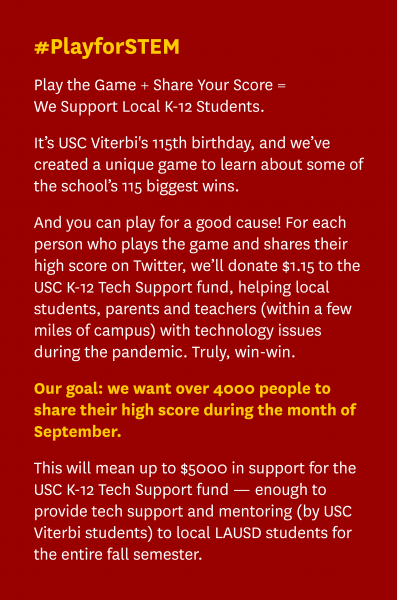 In 1905, USC offered its very first engineering courses out of the physics and mathematics departments.
In 1905, USC offered its very first engineering courses out of the physics and mathematics departments.
One hundred and fifteen years later, the USC Viterbi School of Engineering has a name and a host of accomplishments over the ensuing 11.5 decades.
This past May, Dean Yannis Yortsos, working with USC Viterbi vice deans, chairs, and select senior faculty, sought to identify 115 amazing USC Viterbi accomplishments by faculty, students and alumni over that span of time. This list would span all eight departments, the famed USC Information Sciences Institute and various programs of the school.
This list, like many of its kind, suffers from a clear recency bias. It is by no means the definitive list of all the USC Viterbi School’s noteworthy accomplishments! However, despite these limitations, perhaps it will serve as a helpful primer on what George Bekey, USC Viterbi professor emeritus, once called the school’s “remarkable trajectory.”
Test your knowledge of these USC Viterbi “wins” in a “Who Wants To be A Millionaire”-style interactive game above.
Or, for those who prefer to dive right in…the full list of 115 accomplishments for 115 years awaits.
Ming Hsieh Department of Electrical and Computer Engineering
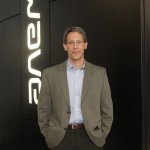
The USC-Lockheed Martin Quantum Computing Center (QCC), led by USC professor Daniel Lidar and ISI’s Robert F. Lucas, launches in 2012. Utilizing the world’s first commercial adiabatic quantum processor, the D-Wave One, USC remains the only university in the world to be hosting and operating a commercial quantum system.
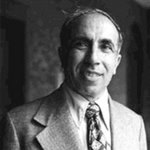
Between 1963 and 1968, Dean Zohrab Kaprielian hires "The Magnificent Seven:" Solomon Golomb, Bob Scholtz, Irving Reed, Charles Weber, William Lindsey, Lloyd Welch and Bob Gagliardi.
This group of electrical engineers founded the famous USC Communications Sciences Institute in 1982.
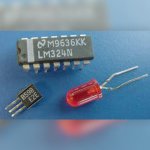
A successful USC proposal to the Joint Services Electronics Program in 1962 helped transform USC into a major research university.
The catch was (then chair, future dean and provost) Zohrab Kaprielian did not have sufficient faculty to do the work. He took the possibility of this award to President Norman Topping and obtained authorization for 10 new faculty positions. USC’s selection was the catalyst for the two decades of dramatic growth and development that were to follow, not only in electrical engineering, but all aspects of the solid-state sciences on the campus.

Amid intense competition, USC engineering wins its first National Science Foundation-funded Engineering Research Center in 1996, the Integrated Media Systems Center (IMSC). The center is lead by future dean, Provost and President, C.L. Max Nikias.
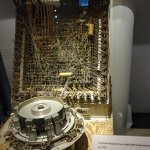
In 1950, Irving Reed and associates demonstrate Northrop’s MADDIDA, one of the world’s first digital computers, to John von Neumann at Princeton.
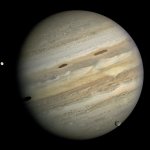
In 1979, Voyager I arrives at Jupiter and begins sending back striking images thanks to basic coding by Andrew Viterbi and error coding by Irving Reed and Gus Solomon.
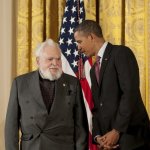
In 1955, Sol Golomb publishes a classic paper on shift register sequences, key to creating digital signals that can be easily detected in noisy environments.
The basis of this research was cited in Prof. Golomb’s U.S. National Medal of Science.
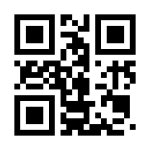
In 1959, Irving Reed and Gustave Solomon submit the paper establishing the Reed-Solomon codes. Decades later, the codes continue to fix intractable errors in technologies today. Used in everything from satellite communications to QR codes to your home internet connectivity.
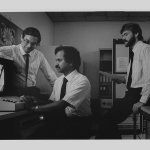
H.C. Andrews and William K. Pratt pioneer the JPEG compression standard, allowing images to be transmitted over the Internet. The Signal and Image Processing Institute (SIPI) is founded in 1972.
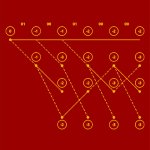
In 1967, alumnus Andrew J. Viterbi publishes a paper describing what later became known as the “Viterbi Algorithm,” the theoretical basis for worldwide cellular communication.
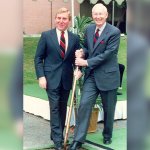
Under the leadership of Dean Len Silverman, the Howard Hughes Electrical Engineering Building and the Charles Lee Powell Hall buildings are established. The buildings provide a home for the systems and electrophysics subsets of the Ming Hsieh Department of Electrical and Computer Engineering.
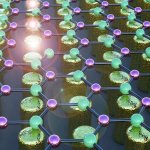
In 1992, USC Viterbi’s position as a photonics research center was strengthened by the dedication of two laboratories: The W.M. Keck Foundation Photonics Reserach Laboratory and the Charles Lee Powell Photonics Instructional Laboratory.
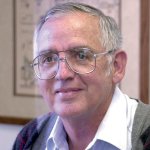
In 1996, Professor Bob Scholtz founded the Ultrawideband Radio Laboratory (UltRa Lab), a highly influential lab, which, for nearly a quarter century, has promoted the study of ultra-wideband radio technology.
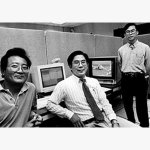
Between 1995 and 2020, Jay Kuo and his alumni contributed immensely to the evolution of MPEG compression standards for video transmission via the Internet.



